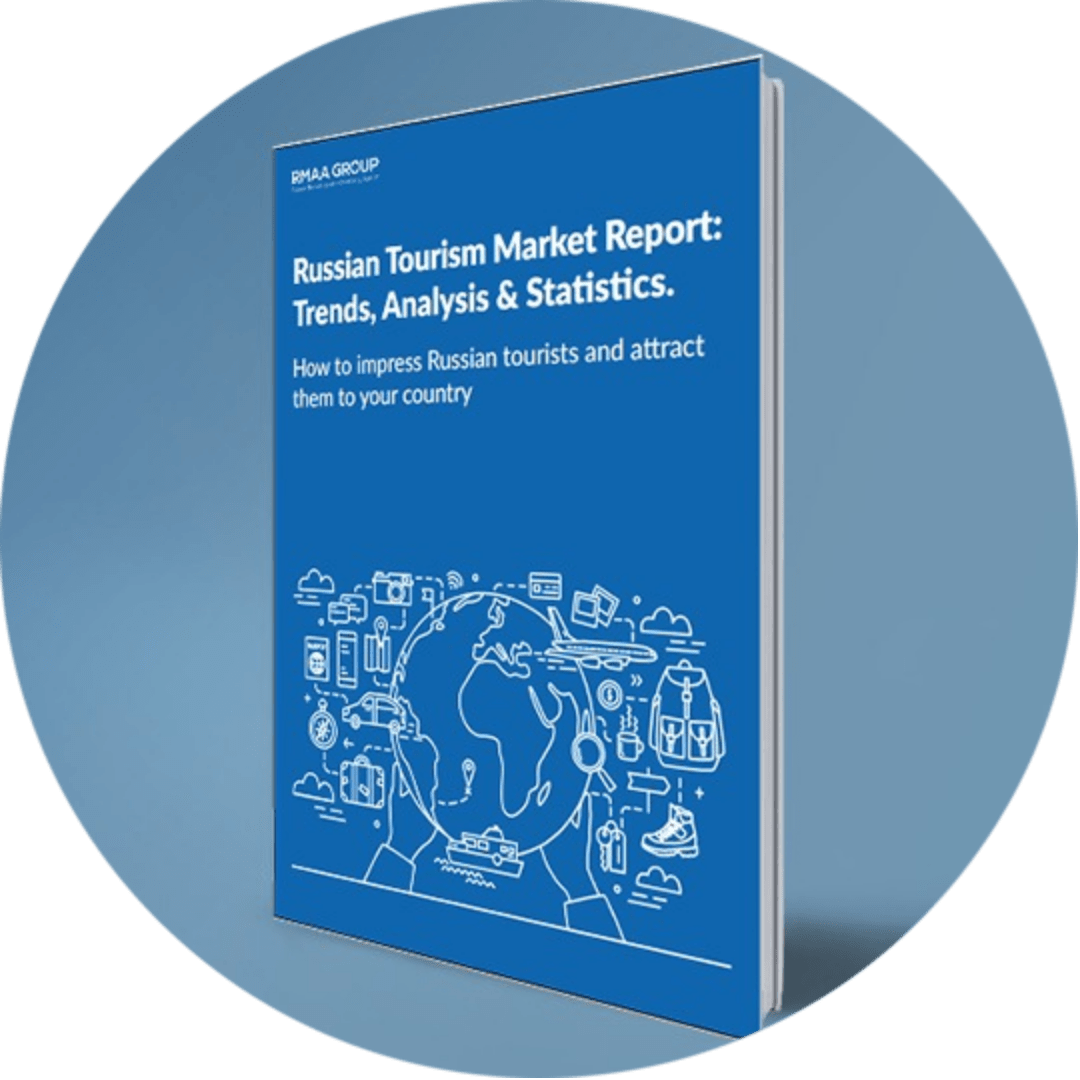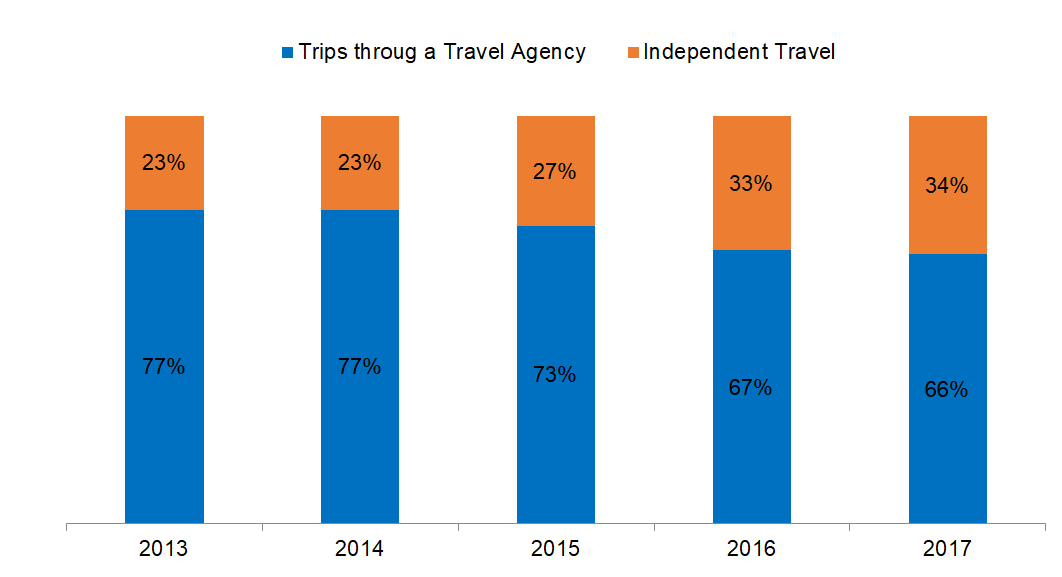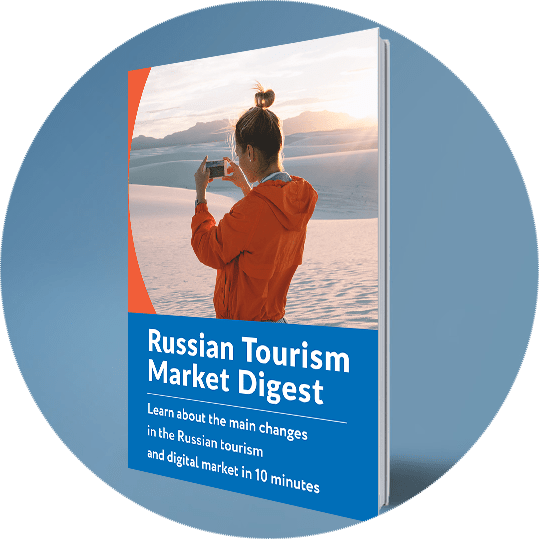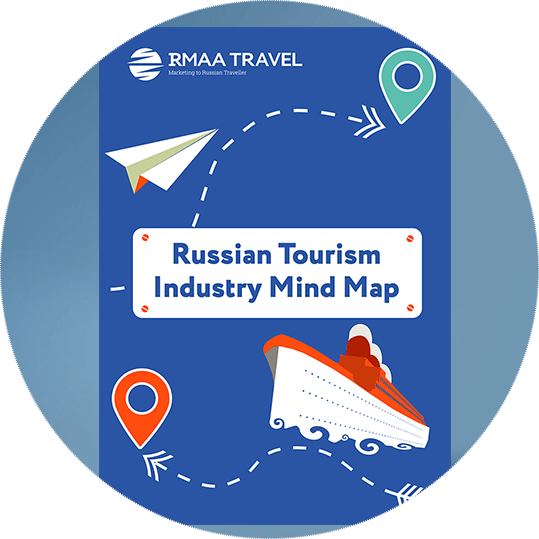Blog about successful marketing strategies in russia
Travel Market Segmentation: A Key to Better Understanding of Russian Customer Needs


B2B MARKETING
Share this Post
Our experience shows that travel business owners seldom or never know their target audience, while knowledge of market segmentation in travel and tourism industry is a foundation of any marketing strategy. Only knowing your target audience, you will be able to correctly set goals, objectives, to formulate a correct offer, and to choose the most effective tools to meet your KPI. So, if you want to get to know your target audience closer and how to promote in the travel market for a maximum reach of only interested tourists from Russia, read our blog.
Travel industry market: segmentation types
There are several target audiences segmentation types in travel business. Let’s start from a basic type to determine characteristics of the target audience that are used in marketing:
- Social and economic characteristics
This means education, income, and social benefits. They show buying preferences and financial solvency.
- Geography
This means a breakdown by countries, cities, regions, streets, depending on the project scale.
- Demography
It includes age, sex, and family status. Buying activity depends on it—it varies in every group. Teenagers are prone to impulse buying, while mature buyers compare more and treat buying in cold blood.
- Psychographics
This criterion is quite diffused, but it shall be considered, too. Social status, lifestyle, interests—here we go.
Then we will talk about types of travel industry market segmentation that will let you make a more detailed description of your target audience.
Travel purpose
- Leisure
Usually tourists brood a decision about a leisure trip for a long time—they get prepared, make choices, read a lot of information and reviews. This type of tourists expects availability of beach recreations, tours, shopping, or other extra criteria.
- Family visiting
Usually such trips are planned in advance, too, and fall on holidays (New Year, for example) or vacation time.
- Participation in seminars and congresses
As a rule, such trips are planned 1-2 months ahead, and a tourist can stay in his or her destination only for the period of the event. Most often, such tourists do not have extra money expenditures in their sights or have minimum ones.
- Business trip
Usually this type of tourists travels within the budget allocated by a company (i.e. they have limited choices of airlines, hotels etc.).
- Medical treatment
These are tourists who go to other countries to get medical treatment that is not provided in Russia or which level there is lower than in a country of destination. Besides, there are some options of preventive treatment: for instance, sea recreation is useful for asthma patients.
Preferences
- Singles or marrieds
Married travelers pay special attention to comfort and choose relaxed recreation. Those who travel alone, as a rule, pursue different goals such as extreme, new impressions, exploration of new opportunities—they do not prioritize comfort and tranquility.
- Self-Guided Tours vs. Organized Tours
Russian people prefer to travel on their own more and more often. Throughout the Russian market, the share of independent travellers has already hit 34%.
- Travel time
From what studies of the year 2017 say, 52% Russian travellers spend 1.5-2 weeks on their trips. Besides, the number of those who travel less increased by 6%, while the share of those who spend more time in travel dropped by 5%.
- Accommodation choice
The favourite choice of Russian tourists are 4* hotels. In 2017, the share of 4-star hotel guests earned 2% more, while the popularity of 3-star hotels dropped by 3%. At the same time, the number of stays in 5-star and 2-star hotels and hostels has not really changed.
How do you collect information about target audience?
- Polling and personal talks to tourists. Consult with those who have already stayed with you or are current guests.
- Online polling services. They allow polling of a large number of Internet users; however, you should bear in mind that not the whole audience of these services will be interesting for you as respondents. That is why think up your questions and their mechanics thoroughly.
For instance, if you want to collect information about Russian tourists who visited Bali or are going to visit it, use a service with a predominant database of respondents from Russia (for example, testograf.ru). Start your poll with a main question: Have you ever visited Bali? A respondent says ‘YES’—continue your poll and clarify information that is of importance for you. ‘NO’—make sure if he or she wants to go there. If the respondent says ‘NO’ again—this is not your target audience. So, a chain of questions with simple answers must be planned necessarily.
- Search system analytics services. Yandex.Metrics and Google Analytics will help you collect useful information about website visitors: searches, age, sex, location, interests, most popular sections and goods.
- Social media. Sex, age, education, focus area, interests, hobbies, pursuits, leisure time—you can learn it all from profiles of your customers and groups where they have a membership. Collected data will not only help you create a detailed profile of your target audience, but will also be of use in future: groups and websites that are popular among your target audience are perfectly suitable for publication of ads.
- Data from marketing and social research.
Promotion on the basis of your target audience profile
After you have made profiles of your target audience (if you learned it as thoroughly as you could, you might have come up with dozens of audiences), then we should specify a promotion strategy for each audience separately: we choose advertising channels, specify advertising types and messages that we need to get across.
In a month or two after launch of the advertising campaign, you will be able to determine which audiences accounted well for themselves, which need an upgrade, and which do not show any interest, so you will need to work through advertising channels and a key message again.
We determine audiences beforehand and modify them on the way, depending on our results, and we also correct our advertising tools.
As travel market segmentation examples, you can use our CJM of two audiences of Russian tourists. To download, just enter your email.
Example of promotion based on CJM
For visual clarity, download our CJM. Inside you will find 2 customer maps on the basis of analysis of two audiences:
1. Married couple aged 40+ living in the Far East, employed, going to have a vacation together, but the decision will be made by a wife (this is how it works in Russian families)
2. Male, 28 years, single, living in Moscow, freelancer, interested in photography and travels
There are the following graphs in CJM:
Actions. This graph shows the whole way from making a decision on a vacation until its end.
Thoughts and feelings. Based on this data, it will be easier for you to make a key advertising message for a particular travel audience.
Satisfaction. A scale demonstrating the most favorable period to deliver a message. Besides, based on this scale, you can decide on the manner of your message.
Touch points. Here are the most popular advertising channels and tools to achieve a set goal—not only to attract a Russian tourist, but also to form his or her positive impression and a desire to come again.
Okay, let’s study the example a married couple with regards to how to use CJM of a Russian tourist, say, if you promote Thailand as a travel destination in the Russian market.
1. At the reflection stage, you can already become a trigger for decision making. At this stage, an excellent push may be banner ads in VKontakte and Odnoklassniki (with our target audience in mind) demonstrating, for example, a Samui beach. A key message at this stage must encourage a wife to make a decision on a vacation. TV ads also work well here.
2. The next stage where you can whet appetite to Thailand is Research. A couple searches information on different countries in Google and Yandex, which were recommended to them by their friends and where they would like to go themselves. At this stage, the key will be a website of your travel destination (with adjusted context ads).
3. Country choice. Here you need to understand that most Russian tourists make a decision based on others’ recommendations (including websites with reviews). That is why at this stage feedback sites are the king. Monitor reviews on your own beforehand, take care of negative feedback management—you can prepare answers if a comment with a remark is really constructive. Besides, at this stage you need to bring in remarketing, for instance, to those who were interested in going to Thailand and targeted ads with offers of ready-made tours.
4. As the audience that we consider most often purchases ready-made tours through travel agencies, when choosing a travel agency and a tour, a large part will be played by loyalty of agencies to your country, how good they know its offers and what conditions they offer (transfer, tours, hotels etc.).
After a voucher is bought, your task is to transform another tourist from Russia into a loyal and regular customer. It depends on many factors: flight, hotel stay, cafes and restaurants, service, tours—as you understand, this is already a more global task that is implemented locally in a country.
Above we warmed up with an example of only one possible scheme to build a marketing plan for advertising promotion based on CJM. At any stage, you can bring in additional promotion tools to achieve a better effect.
In conclusion, we would like to note that, when targeting advertising campaigns to various audiences, remember: without experiments it is impossible to find effective channels and formats for every audience. When adding new audiences or testing new channels, it is not necessary to redistribute the whole budget: budget 10-15% of your planned expenses in advance for such experiments, and, as the time goes by, you will be able to choose most relevant promotion channels for every audience.
Travel Research
The Russian Tourism Market Report: Trends, Analysis & Statistics | 2019. How to impress Russian tourists and attract them to your country

Ready to partner with the specialists in Russian travel marketing and advertising?
About the Author
Head of Digital, editor-in-chief of the RMAA Agency Blog
Join 2,000+ of your Peers!
Get our latest articles delivered to your email inbox and get our exclusive White Paper "How to sell to Russian large companies?" for FREE!
You will be the first to know about Russian marketing insights,
news and updates from our agency.
Stay tuned!



















